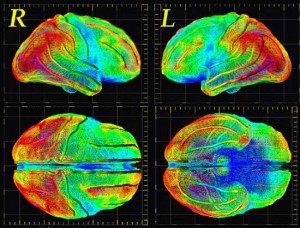Strike one, strike two, strike three and you’re in it for life. This is the ideology that our justice system has for criminals these days. Although, is it possible to predict if strike two or three will happen? Recently new technology has risen to jump start the idea that we can tell if a criminal will commit another crime after being released from prison. First, we will look at the neuroscience behind this belief, then we will look at how this can benefit our society, and lastly we will look at my personal opinion.
Neuroimaging
Found through research at Duke University, “neuroimaging” is a new break through in the scientific community. Neuroimaging is a noninvasive process that allows for individuals to have better visualization of the brain structure and how it is functioning in each patient. Through this process, medical personnel and scientist are able to predict if a criminal will commit a crime again.
The following studies do not suffer from the file drawer problem; they have been published in the “Proceedings of the National Academy of Sciences”. The first study from the University of New Mexico, included 96 male criminals all between the ages of 20 and 52. All 96 individuals have been released from prison for the past four years. The study used the anterior cingulate cortex (ACA), the part of the brain that is related to impulsiveness and behavior. When this part of the brain is damaged, that particular individual is more likely to commit a criminal act. The study showed that of the 96 males, the ones with low ACA activity are two times more likely to reoffend than the others. With that said, if we can measure the amount of activity in the ACA on an MRI, then we can see who is more likely to reoffend, right?
Of course this hypothesis has many third variables. Some of these can be anything from the fact that these men were locked in prison for so long, as well as the fact that some of these men may not actually want to be civilized, this goes hand and hand with mental health. Matthew Bohrer goes deeper into what these third variables could be here.
How this will benefit our society
This will allow for the justice system to better prevent more crime. The best example of this is with Rodney Alcala. In 1968, Alcala raped and almost succeeded in murdering an eight year old girl in his apartment. He was then released from prison and put on parole less than ten years later in 1974. After being in prison for five shorts years, Alcala was released. Afterwards, Alcala was convicted of killing five known girls. Could this have been prevented?
Crime in America says that of 405,000 prisoners, two-thirds of them were arrested again for a new crime only within three years of their release. Additionally, within five years of being released, three-quarters of criminals were arrested for a re-offense. This is a stomach flipping amount if you ask me.
Additionally, here is a study showing that eight out of ten inmates were arrested again after being released from a year or more in prison. This study was used to evaluate the Delaware Justice system, taking place in the year 2013. The Governor of Delaware stated that they needed to find a new and better way to reduce crime and prevent criminals from re-offending. The development of this neuroimaging technology can be that solution.
My Personal Opinion
Contrary to the null hypothesis, which is that neurological technology won’t be able to tell if a criminal will commit another crime, I believe that it will. Also, I think that this is something that could better our society immensely. If we have the ability to test a criminal before we release them from jail, we could then prepare or potentially avoid the next crime from being committed. The morality behind this argument is a discussion for a different time, but as for what is in this blog post, I believe that it could be beneficial.
Citations
Sci Gogo. Will Parker. “Future Criminal Behavior Predicted With Brain Scans”. March 2013. Link
Psycology Today. Joshua Gowin. “Can We Predict Crime Using Brain Scans?” April 2013. Link



I agree with you that technology could help detect crime and improve society. A popular topic in my CAS 100A class this past summer was reducing drinking and driving by installing a breathalyzer inside a car – only starting the vehicle if the driver blows below the legal limit. Sure, there are ways to get around this and start the car even if one is above the legal limit (someone more sober blows into it), but this is a start.
If that was implemented in my community at home, it would be a huge improvement. There are countless numbers of alcohol related car accidents every year, most of them underage as well.
Technology is advancing for the better!